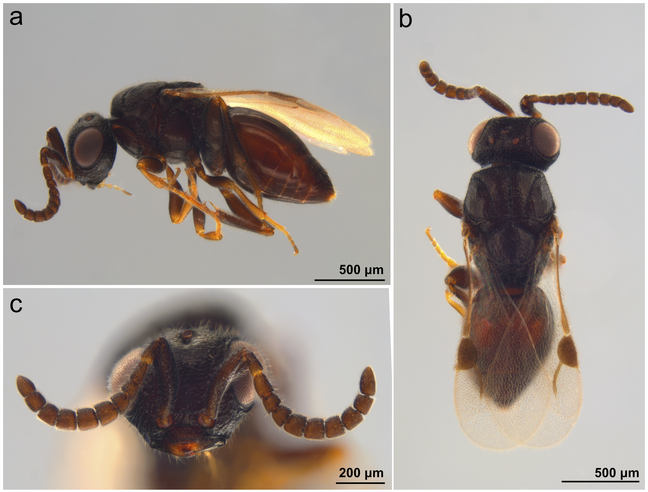Although the state of Baden-Württemberg is widely regarded as a well-studied region, a new study reveals that there is still an astonishing, previously hidden insect world to discover. Using genetic methods, researchers from the Natural History Museum were able to track down the remarkable diversity of some of our tiniest wasps.
As part of the "German Barcode of Life" (GBOL) project, the team collected 2,136 specimens of the previously little-researched superfamily Ceraphronoidea at 18 locations across Baden-Württemberg. Prior to their study, only 36 species in this superfamily had been recorded in Germany. Using DNA barcoding, which utilises a short gene segment to compare specimens reliably, the researchers discovered at least 193 genetically distinct groups. Among these were several specimens of the wasp Creator spissicornis, recording this species for the first time in Germany.
Ceraphronoidea are tiny but ecologically important wasps. As parasitoid wasps whose larvae develop inside and eventually consume their insect hosts, they sit at the top of complex food webs. In doing so, they provide an indispensable service: they ensure robust, resilient ecosystems and keep pest insect populations in check, which is particularly useful in natural plant protection without the use of chemicals.
Baden-Württemberg provided an ideal model region for this study. With its varied geology, from the granite and gneiss of the Black Forest to the limestone of the Swabian Alb and the loess plains of the Upper Rhine Valley, combined with habitat mosaics like orchard meadows and steep-slope vineyards, Baden-Württemberg supports roughly three-quarters of Germany’s known insect fauna. This landscape diversity creates niches for countless wasp species, turning the state into a natural laboratory for basic biodiversity research.
“Only a fraction of our genetic clusters could be linked to known species based on existing data", summarises lead author Marina Moser of the Natural History Museum. "This shows how urgently we need to continue our research, even in regions we think we know inside out. Rather than waiting for complete species lists, we should act now to conserve and restore habitats across the board. This way, we could not only protect the species we already know, but also shine a light on those that have not yet been formally documented or have remained completely undiscovered."
The full study was published in “Biodiversity Data Journal”.

